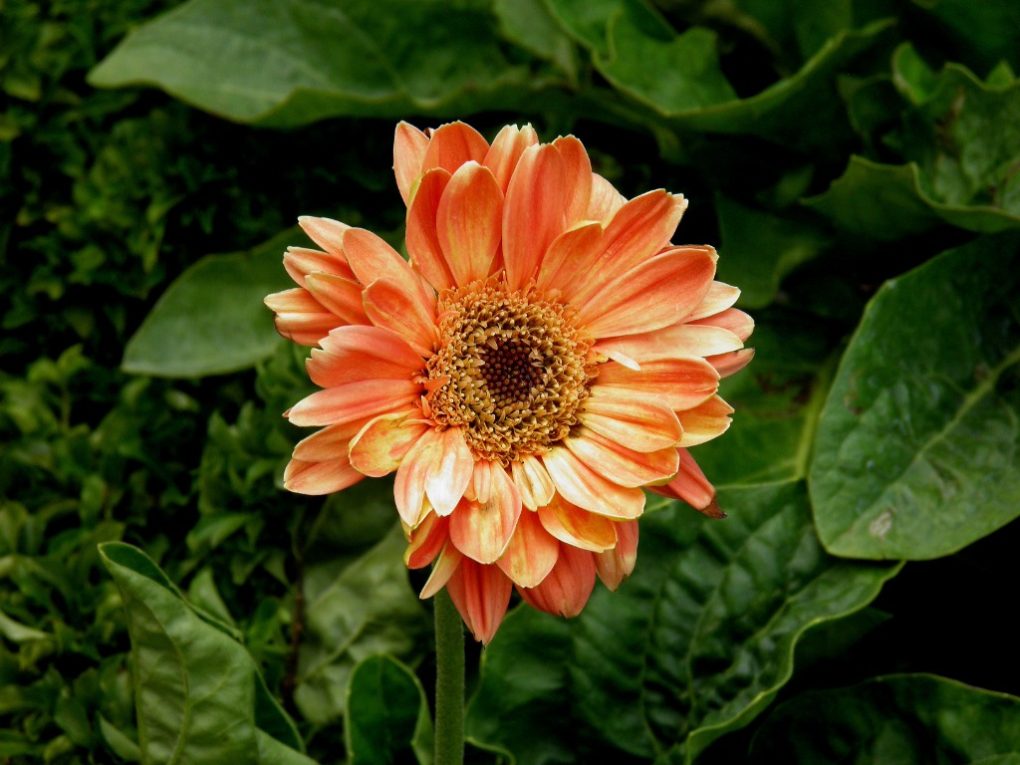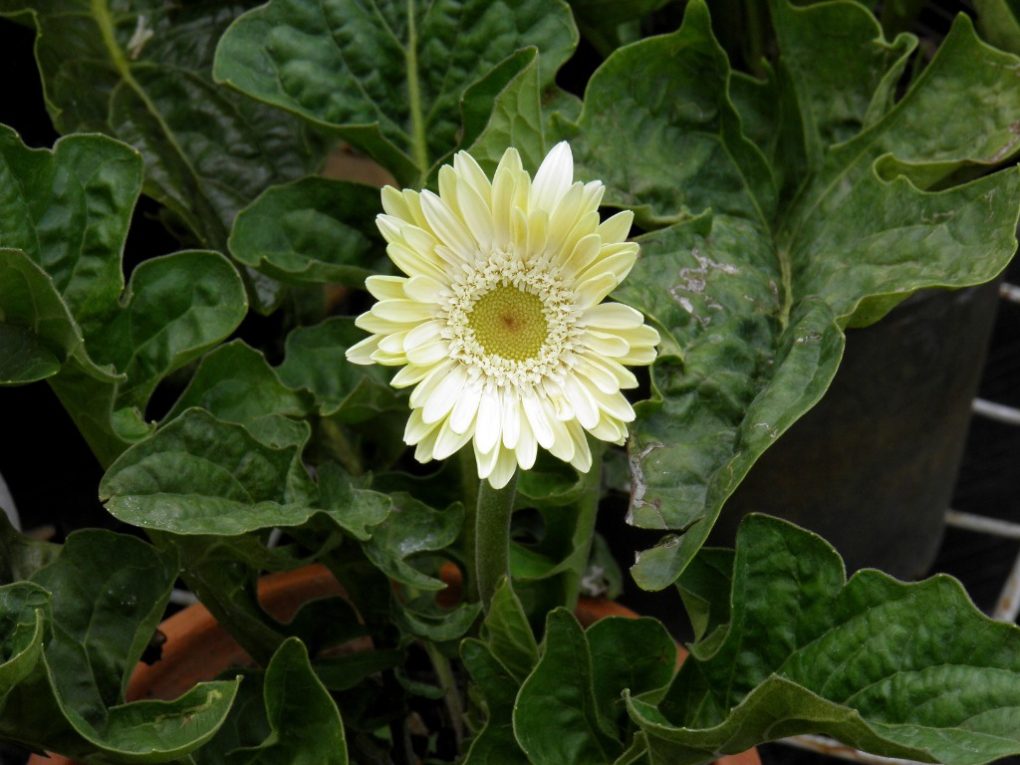When Do Gerbera Daisies Bloom: A Comprehensive Guide
Gerbera Daisies (Gerbera jamesonii) typically bloom from early spring to late autumn. These perennial flowering plants showcase their bright and colorful blossoms during the year’s warmest months, making them popular garden choices in many regions.

The precise blooming period for Gerbera Daisies depends on the specific variety and the local climate conditions. They thrive best in temperatures ranging from 60-75°F (16-24°C). To ensure repeated blooming throughout the season, it is essential to provide proper care and maintenance for the plant, such as regular watering, sufficient sunlight, and timely deadheading of spent flowers to promote fresh growth.
Table of Contents
Gerbera Daisy Bloom Cycle
Gerbera daisies are vibrant and beautiful flowers that go through a fascinating bloom cycle. Understanding this cycle can help you care for your Gerbera daisies and ensure they thrive.
1. Germination (Week 1-2)
The bloom cycle of Gerbera daisies begins with germination. Gerbera daisy seeds need warmth, moisture, and light to germinate successfully. Sow the seeds in a well-draining soil mix and keep the soil consistently moist. In about one to two weeks, you will see the first signs of sprouting.
2. Seedling Growth (Week 3-6)
During this stage, the Gerbera daisy seedlings develop their first true leaves. They require ample sunlight and regular watering to support their growth. Maintain a temperature of around 70-75°F (21-24°C) and protect from extreme heat or cold. After about three to six weeks, the seedlings will be ready to be transplanted into larger pots or the garden.
3. Vegetative Growth (Week 7-10)
Once the Gerbera daisy seedlings have been transplanted, they enter the vegetative growth stage. During this period, the plants focus on leaf development and establishing a robust root system. Regularly water and fertilize them with a balanced fertilizer every two weeks in well-draining soil. Maintain a temperature of around 65-75°F (18-24°C) to ensure optimal growth.
4. Budding (Week 11-12)
As the Gerbera daisy plants mature, they begin to produce flower buds. These buds form at the center of the plant and gradually grow larger and more visible. At this stage, provide adequate sunlight, water, and fertilization to support bud development. The buds will slowly show color, indicating they are nearing the blooming stage.
5. Blooming (Week 13-20)
The blooming stage is the most exciting part of the Gerbera daisy bloom cycle. The buds open up into stunning flowers with vibrant colors and intricate petals. Each flower typically lasts about two to three weeks, providing a beautiful display. Ensure the plants receive sufficient sunlight, water consistently, and deadhead faded flowers to encourage continuous blooming.
6. Fading and Seed Production (Week 21-26)
After the blooming stage, the Gerbera daisy flowers gradually fade and wither. During this time, the plant directs its energy toward seed production. Allow the flowers to dry naturally on the plant, as they will contain seeds for future growth. Once the flower heads have completely dried, you can collect the seeds for propagation or allow them to self-sow.
7. Dormancy (Week 27-52)
In the final stage of the bloom cycle, Gerbera daisies enter a period of dormancy. The plants will stop producing new flowers and focus on conserving energy. Reduce watering and fertilization during this time, but make sure the soil doesn’t completely dry out. Gerbera daisies are generally not frost-tolerant, so protect them from freezing temperatures if necessary. The plants will remain dormant until the next growing season when the cycle begins again.
| Bloom Stage | Timeframe |
| Germination | Week 1-2 |
| Seedling Growth | Week 3-6 |
| Vegetative Growth | Week 7-10 |
| Budding | Week 11-12 |
| Blooming | Week 13-20 |
| Fading and Seed Production | Week 21-26 |
| Dormancy | Week 27-52 |
Understanding the Gerbera daisy bloom cycle allows you to appreciate these flowers’ journey, from seed to beautiful blooms. By providing the right care and conditions at each stage, you can enjoy a continuous display of stunning Gerbera daisies in your garden.
Caring for Gerbera Daisies

Gerbera daisies are beautiful and vibrant flowers that are relatively easy to care for. Here are some tips to help you care for your gerbera daisies and keep them blooming throughout the season.
Watering
To keep your Gerbera daisies healthy, it is important to maintain consistent moisture levels in the soil. However, overwatering can be harmful to the plant and may lead to root rot and other issues. It’s recommended to water your gerbera daisies when the soil feels dry to the touch, but avoid letting the soil become waterlogged. To prevent moisture from accumulating on the leaves, it’s best to water them in the morning, giving the leaves time to dry throughout the day.
Fertilizing
To keep your gerbera daisies blooming, it’s essential to fertilize them. Use a balanced fertilizer, like a 10-10-10 or 20-20-20 formula, every two weeks when they are growing. Make sure to follow the instructions on the fertilizer package because over-fertilizing can harm your plants.
Pruning
Deadheading your gerbera daisies is important to encourage new growth and more blooms. Use sterilized pruning shears to remove spent flowers and stems. This will also help prevent the spread of disease and pests. You can also pinch back the stems to promote bushier growth and more flowers.
Pest and Disease Control
Gerbera daisies can be susceptible to pests and diseases like aphids, spider mites, and powdery mildew. Regularly inspect your plants for signs of pests or disease, and take action immediately if you notice any problems. Use insecticidal soap or neem oil to control pests, and remove any infected leaves or stems to prevent the spread of disease.
Overall, caring for gerbera daisies is relatively straightforward. Your gerbera daisies should bloom beautifully throughout the season with proper watering, fertilizing, pruning, and pest and disease control.
